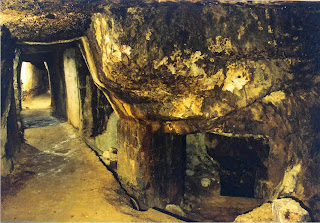Europe hungered for gold, but did not have mines in which to find it. It did exist, however, in smaller amounts in rivers, where it could be panned.
What Europe and Britain did have was silver, and so silver coins dominated Western European currencies, especially after the 938CE discovery of enormous deposits of silver (along with lead and copper) in Rammelsberg in eastern Germany. Further discoveries of silver in the Black Forest, Freiberg, Bohemia, and the Alps fed the appetite for coins and jewelry for much of the Middle Ages, boosting the economy. It is estimated that in the 1220s, England minted 4,000,000 silver pennies, rising to 40,000,000 between 1279 and 1281.
Gold was found in 1320 in Slovakia, and smaller amounts were found later in France, Germany, and Britain. The High Middle Ages began to see gold used for more artwork, particularly ecclesiastical items, chalices, reliquaries, etc. Gold coins could also be minted outside of the Byzantine Empire.
Too much gold, however, can be a problem for the economy. Soon I'll tell you about a man who had too much gold. First, however, a little more about Rammelsberg.

No comments:
Post a Comment
Note: Only a member of this blog may post a comment.